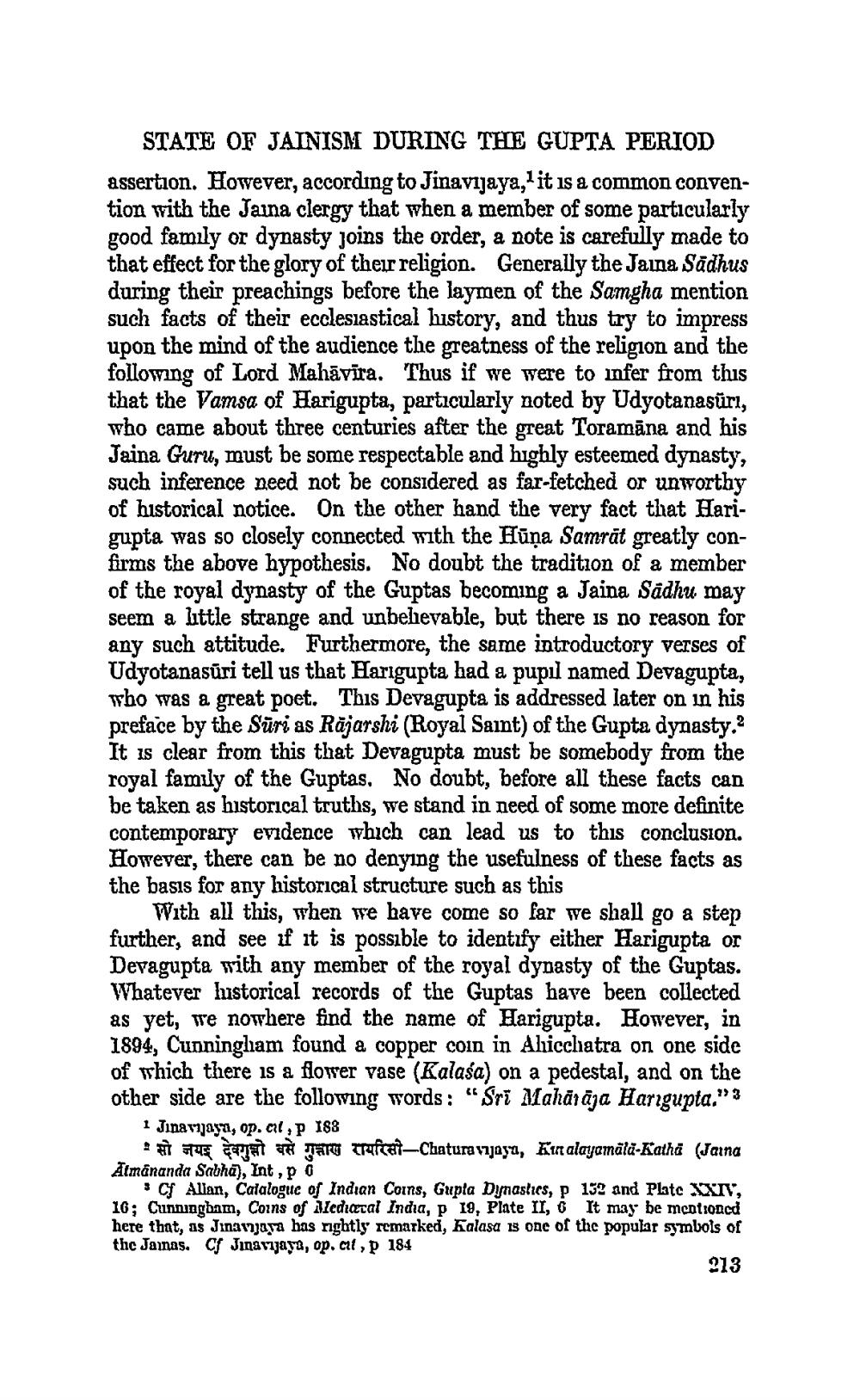________________ STATE OF JAINISM DURING THE GUPTA PERIOD assertion. However, according to Jinavijaya," it is a common convention with the Jaina clergy that when a member of some particularly good family or dynasty joins the order, a note is carefully made to that effect for the glory of their religion. Generally the Jaina Sadhus during their preachings before the laymen of the Samgha mention such facts of their ecclesiastical history, and thus try to impress upon the mind of the audience the greatness of the religion and the following of Lord Mahavira. Thus if we were to infer from this that the Vamsa of Harigupta, particularly noted by Udyotanasuri, who came about three centuries after the great Toramana and his Jaina Guru, must be some respectable and highly esteemed dynasty, such inference need not be considered as far-fetched or unworthy of historical notice. On the other hand the very fact that Harigupta was so closely connected with the Huna Samrat greatly confirms the above hypothesis. No doubt the tradition of a member of the royal dynasty of the Guptas becoming a Jaina Sadhu may seem a little strange and unbelievable, but there is no reason for any such attitude. Furthermore, the same introductory verses of Udyotanasuri tell us that Harigupta had a pupil named Devagupta, who was a great poet. This Devagupta is addressed later on in his preface by the Suri as Rajarshi (Royal Saint) of the Gupta dynasty.? It is clear from this that Devagupta must be somebody from the royal family of the Guptas. No doubt, before all these facts can be taken as historical truths, we stand in need of some more definite contemporary evidence which can lead us to this conclusion. However, there can be no denying the usefulness of these facts as the basis for any historical structure such as this With all this, when we have come so far we shall go a step further, and see if it is possible to identify either Harigupta or Devagupta with any member of the royal dynasty of the Guptas. Whatever historical records of the Guptas have been collected as yet, we nowhere find the name of Harigupta. However, in 1894, Cunningham found a copper coin in Alicchiatra on one side of which there is a flower vase (Kalasa) on a pedestal, and on the other side are the following words: "Sri Maharaja Hargupta." 3 1 Jinavijasa, op. cit, P 188 2 4 Tarv trefcat-Chatura vajaya, Kirtalayamala-Katha (Jama Almananda Sabha), Int , C Alian, Cataloguc of Indian Coins, Gupta Dynasties, p 132 ond Plate XXIV, 16; Cunningham, Coins of Icdrceral India, P 19, Plate II, 6 It may be mentioned here that, as Jmavjaya has rightly remarked, Kalasa is one of the popular symbols of the Jamas. Cf Jinavijaya, op. cit, P 184 213




